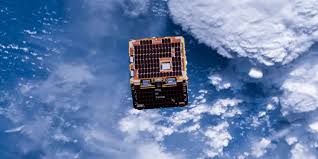Small Satellite Launches: Cost-Effectiveness and Accessibility.

Small Satellite Market Outlook
The vast expanse of space, once the exclusive domain of behemoth government agencies and sprawling aerospace corporations, is undergoing a quiet revolution. At the heart of this transformation lies the humble small satellite, a technological marvel democratizing access to orbit and reshaping industries in profound ways.
The small satellite market, encompassing satellites ranging from nanosatellites (1-10 kg) to microsatellites (10-100 kg) and mini satellites (100-500 kg), is experiencing explosive growth. Driven by advancements in miniaturization, cost-effective launch options, and a burgeoning demand for data-driven insights, these miniature marvels are carving out a significant niche in the space economy.
A Convergence of Technological Triumphs:
Several key technological advancements have fueled this market’s ascent. Firstly, the miniaturization of electronic components, sensors, and communication systems has enabled the creation of powerful satellites in increasingly compact form factors. This has drastically reduced development and manufacturing costs, making space access more affordable. Secondly, the proliferation of standardized satellite platforms, like CubeSats, has streamlined design and development processes, fostered innovation and reducing time-to-market.
Furthermore, the advent of rideshare small satellite market launch services, where small satellites are launched as secondary payloads alongside larger missions, has significantly lowered launch costs. Companies like SpaceX, Rocket Lab, and others are providing more frequent and affordable launch opportunities, opening up space access to a wider range of players.
Applications Spanning the Globe:
The applications of small satellites are as diverse as they are impactful. Earth observation, one of the most prominent applications, is being revolutionized by constellations of small satellites providing high-resolution imagery and data for agriculture, disaster management, environmental monitoring, and urban planning. These satellites offer frequent revisit times, enabling near real-time monitoring of dynamic events.
Communication is another key area where small satellites are making waves. Constellations of these satellites are providing broadband internet access to remote and underserved areas, bridging the digital divide and enabling connectivity in regions previously inaccessible. Moreover, they are enhancing maritime communication, enabling tracking and monitoring of vessels across vast oceans.
Scientific research is also benefiting immensely. Small satellites are being deployed for atmospheric studies, space weather monitoring, and fundamental physics experiments. Their affordability and flexibility allow for the rapid deployment of specialized payloads, enabling scientists to conduct experiments that were previously impossible.
A Market Poised for Continued Growth:
The small satellite market is projected to experience substantial growth in the coming years. Factors contributing to this growth include
- Increasingdemand for data-driven insights: Businesses and governments are increasingly relying on satellite data for decision-making, driving demand for Earth observation and remote sensing services.
- Expanding broadband connectivity: The need for reliable internet access in remote and underserved areas is driving the deployment of communication satellite constellations.
- Growing investment in space technology: Venture capital and private equity firms are increasingly investing in small satellite companies, fueling innovation and market expansion.
- Reduced launch costs: Continued advancements in launch technology and the proliferation of rideshare launch services will further reduce the cost of accessing space.
- The proliferation of IoT: The internet of things (IoT) is increasingly reliant on satellite connectivity for remote sensing and data collection, leading to growth in small satellite applications.
Challenges and Opportunities:
Despite its immense potential, the small satellite market faces certain challenges. Space debris is a growing concern, as the increasing number of satellites in orbit raises the risk of collisions. Addressing this issue requires international cooperation and the development of effective debris mitigation strategies.
Get a Quote – Request a price quote for the report or specific research services.
Regulatory frameworks also need to evolve to keep pace with the rapid growth of the market. Streamlining licensing processes and ensuring fair access to spectrum are crucial for fostering innovation and competition.
However, these challenges also present opportunities. Companies are developing innovative solutions for debris removal and in orbit servicing. Additionally, the need for robust regulatory frameworks is driving collaboration between governments and industry stakeholders.
The Future is Small and Bright:
The small satellite market is poised to play a transformative role in the space economy and beyond. These miniature marvels are democratizing access to space, enabling a wide range of applications that benefit society as a whole. As technology continues to advance and costs continue to decline, we can expect to see even more innovation and growth in this dynamic and exciting sector. The little engine that could, is powering a new era of space exploration and utilization. The future of space, it seems, is small, and undeniably bright.